Long enjoyed by Central European holidaymakers, the Istrian peninsula has surprisingly remained fairly unknown among international tourists. And while that undiscovered feel is what we love and don’t want the region to ever lose, it’s also a shame that more people do not explore this enchanting region.
We often say that Istria is “Italy on a budget”. With centuries of Venetian and later Italian rule, the lasting influences are strong. You’ll notice it reflected in Istria’s food, architecture, culture and even language, being officially bilingual to this day. When coupled with scenes straight out of Venice, Tuscany, or Umbria, you’ll often pinch yourself that you’re not on the other side of the Adriatic. But it’s all for a noticeably cheaper vacation than Istria’s more high-trafficked neighbor.
This guide details where to stay and what to do in this alluring corner of Europe.
Jump to:
- Where is Istria?
- How to Get to Istria
- How Many Days are Recommended in Istria?
- Where to Stay and What to See: a town by town guide
Where is Istria?
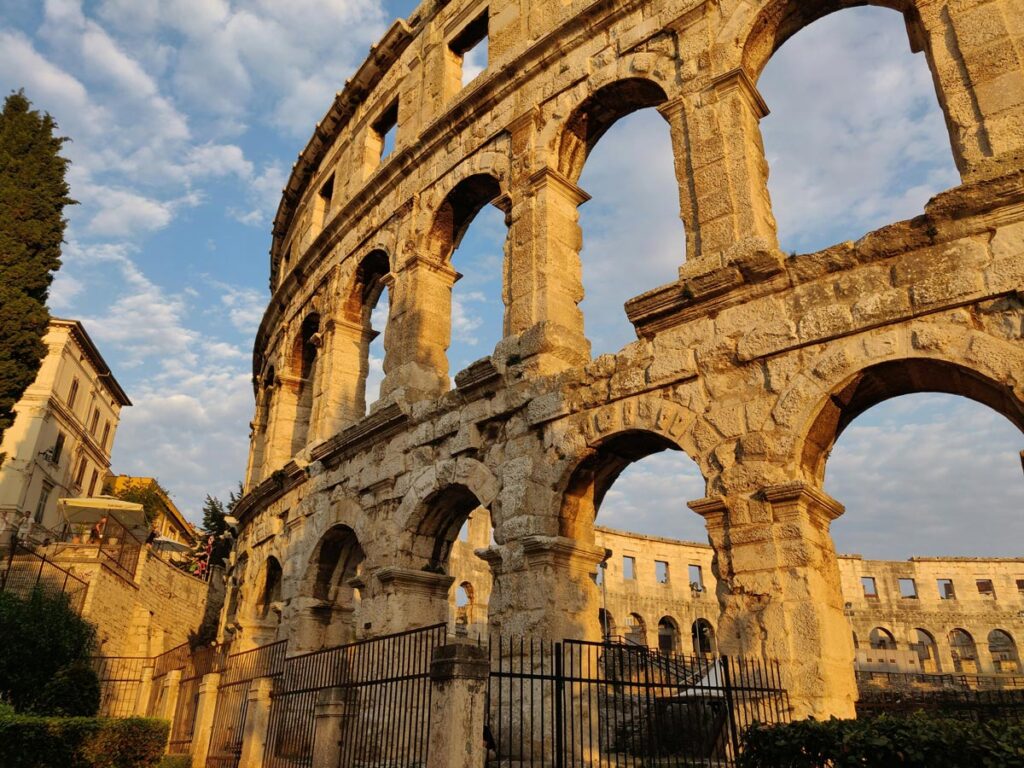
Istria is the largest peninsula on the Adriatic Sea. It encompasses three countries: Croatia, Slovenia, and a small corner of Italy near Trieste.
Since 2023, all three countries are now on the Euro (€) currency, making it easy to hop across the region’s international borders with minimal headache.
How to Get to Istria
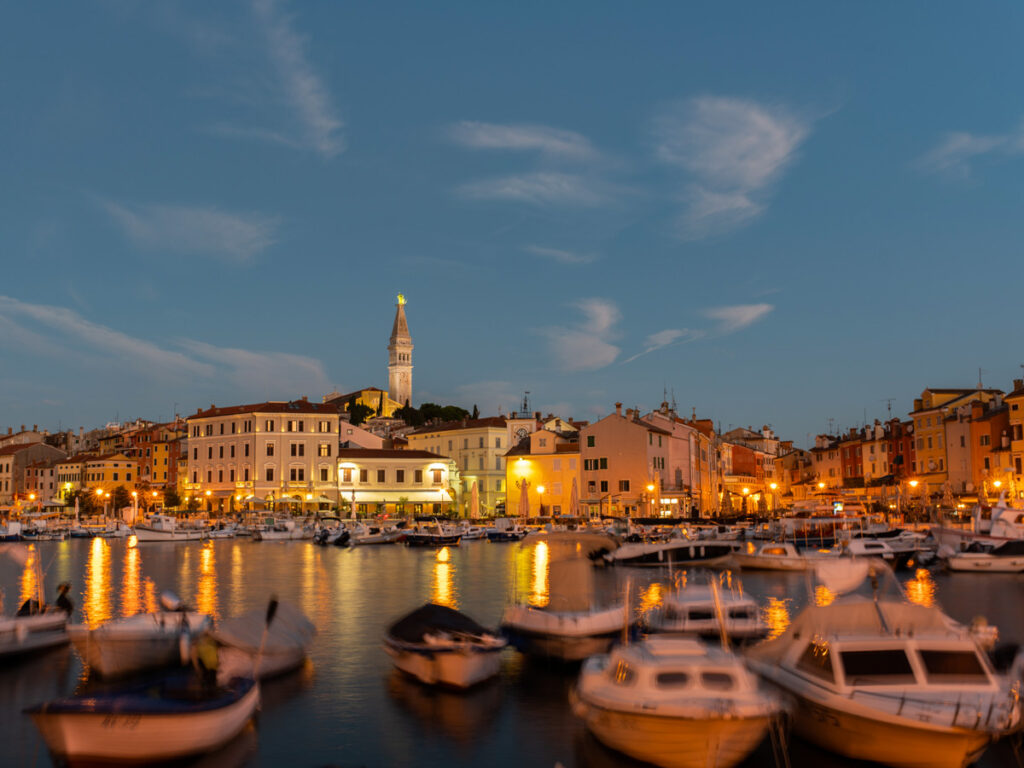
By Car
Having a car is generally the most convenient option to get around. Roads are well labeled and well maintained, and parking lots are prevalent. Additionally, the flexibility of having your own vehicle makes for effortless day trips around the region.
By Air
The closest airport to the majority of Istrian towns is Pula International Airport, which services flights to and from all major European cities. From here, you can rent a car, catch a taxi, or take the airport shuttle to either Pula’s main town (€6, year-round) or Rovinj (€25, high season only).
Note: If you happen to be staying in Istria anywhere north of Piran, Trieste is your closest airport. Other alternative airports for this area include either Rijeka, Ljubljana, Zagreb, or Venice, which are all a few hours’ drive away.
By Bus
Istria is well-serviced by bus, and you can catch a ride from most major European cities. The closest hubs include Zagreb, Trieste, Venice, and Ljubljana, as well as smaller regional towns. Some of the biggest bus companies servicing the region include FlixBus, Arriva, and Brioni.
By Ferry
While options are limited, ferry routes do exist between Italy and Pula/Rovinj in Istria.
- Pula: roundtrip to/from Venice
- Rovinj: roundtrip to/from Venice, Triese, Cesenatico
Ferry routes only operate between May — September, with varying frequency. Explore routes and buy tickets at Direct Ferries.
How Many Days are Recommended in Istria?
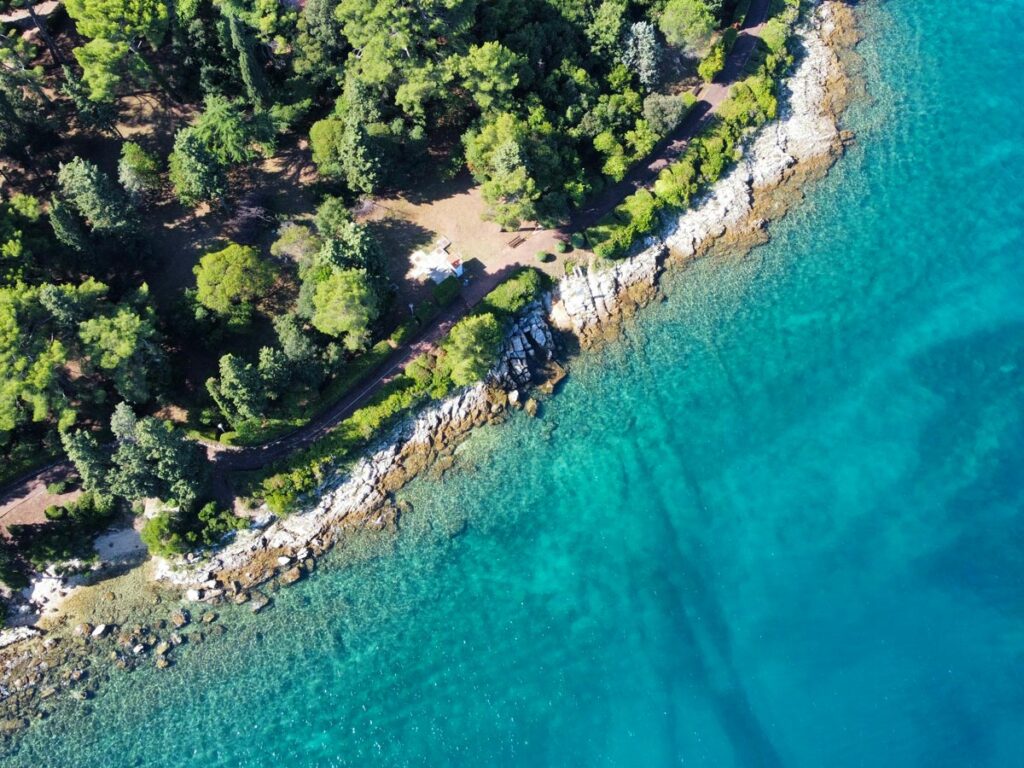
Istria is best enjoyed slowly. Part of its charm is indulging in languid days, soaking up the sun from a seaside chair or sun-kissed vineyard.
Wherever you choose to stay, we recommend taking at least three (3) days minimum in Istria. Use one day to see the local sights, one leisure day without an agenda, and another day to explore neighboring towns. Add on further days from there, as your schedule permits.
Where to Stay and What to See: a Town by Town Guide
Before choosing where to stay in Istria, you should first determine what type of vacation you’re looking for: history, beaches, wineries, etc.
However, the peninsula is not large, and you can drive the full length in 90 minutes. So even after you choose your “home base,” you’ll still be able to see everything on a day trip or two.
Each of Istria’s main towns are summarized below, to help you decide the best location for your base while exploring the region.
Pula
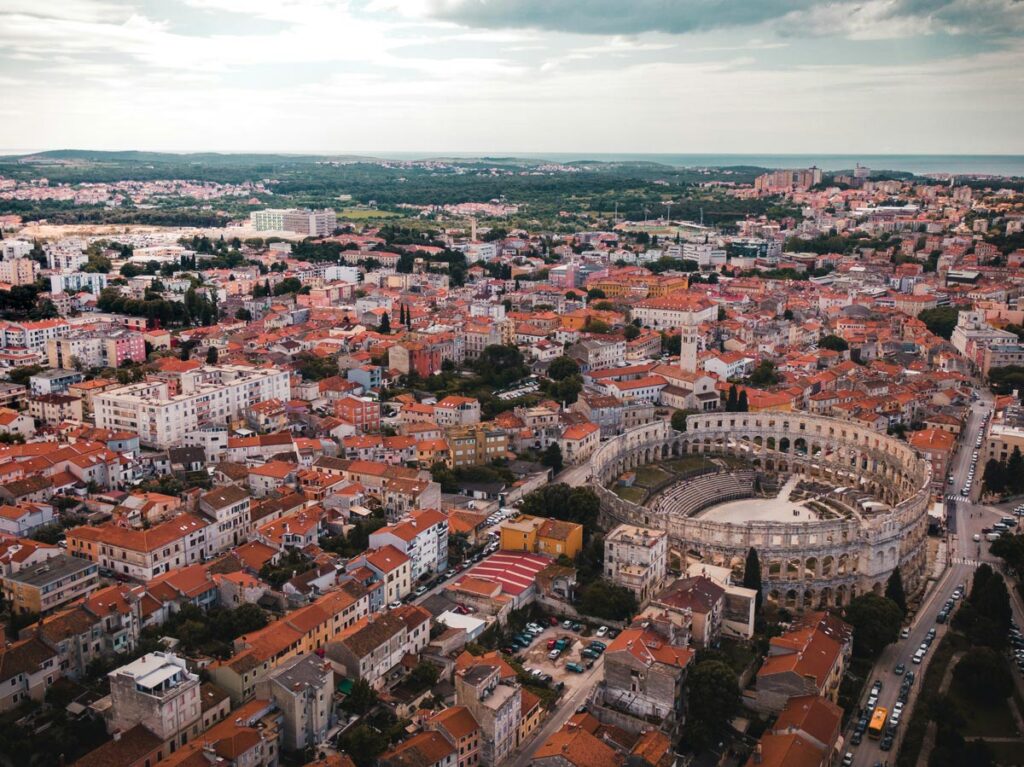
Best for: Roman history, airport convenience
Situated along the southern point of Istria, Pula is unquestionably the region’s largest city, with over 100,000 inhabitants. It also houses the local international airport, so if you’re planning to fly into Istria, this is your closest option.
Pula has some astonishingly well-preserved Roman monuments, including its iconic Amphitheatre, which is one of most extensive arenas outside of Rome’s Colosseum.
After you tour the Amphitheatre (be sure to check out the underground gladiator passageways!), meander the 10-minute walk through Pula’s old town to the Forum. Even 2,000 years after it was first built, it still remains a central gathering place. The Temple of Augustus, dating from 14 AD, is a focal point on the square, and just around the corner is the Arch of the Sergii, one of the ancient city gates constructed in 29 BC.
Note: the Temple of Augustus was heavily damaged by WWII bombing, and had to undergo an extensive renovation. Some may consider it “inauthentic” as a result, but its restorers lovingly restored it so well, one would be hard-pressed to notice a difference.
For views over the harbor, climb up to the Kastel, a 1600s fortress built by the Venetians to defend their Istrian territories. Lastly, if you have extra time, you can venture out to Brijuni National Park. These 14 remotely populated islands have Roman archeological sites and even dinosaur footprints.
Rovinj
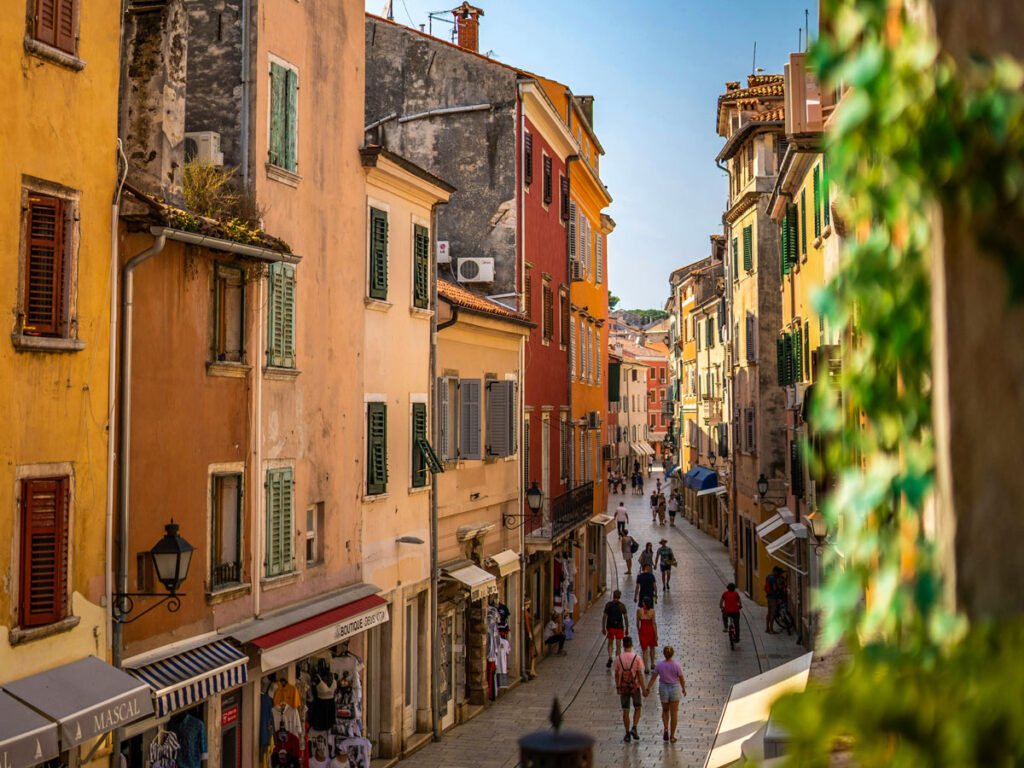
Best for: experiencing la dolce vita, water activities
Known as the “pearl of Istria,” Rovinj is the perfect seaside resort, with a subtle sophistication that is reminiscent of the small towns along the Amalfi Coast.
For water activities, you can either lounge at one the multiple beaches south of the old town, or take a day trip to the neighboring islands just offshore, with their own secluded inlets and posh hotels. As the day cools off and the twinkling lights come on in the old town, grab a gelato and enjoy an evening passeggiata along the waterfront to fully soak up the atmosphere of this Adriatic gem.
Note: We made Rovinj our home base while exploring Istria and would absolutely recommend it. Outside of Pula, it has the most hotel options, and is fully walkable. You can read a more in-depth summary of Rovinj here.
Poreč
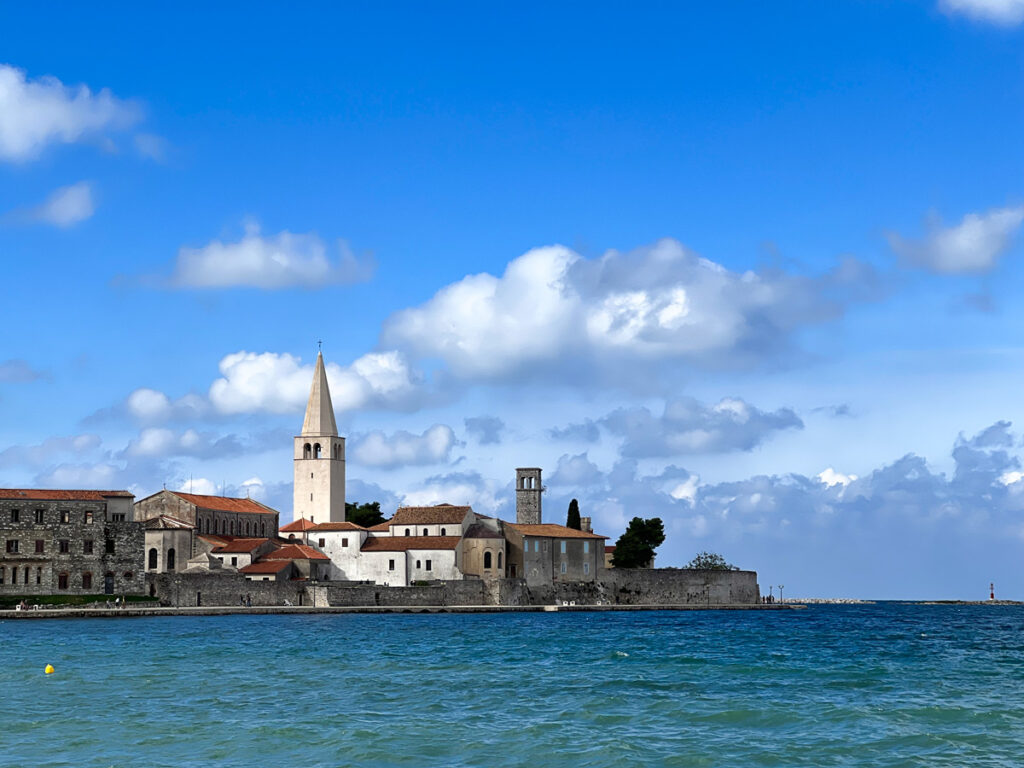
Best for: Byzantine history
Poreč, situated halfway between Rovinj and Novigrad, gets crowded with tourists in the warm months. What is desirable for some may be disagreeable for others, but either way — expect a crowded promenade full of buzzing cafes and bars during the summer.
What sets Poreč apart is the Basilica of Euphrasius. This 6th century religious complex has extensive mosaics, little changed from when the Constantinople and Ravenna artisans installed them 1,500 years ago. The vibrant church was continually expanded, with a 13th century canopy above the altar and a 1520s bell tower that’s open for climbing. At the top, you’ll catch sumptuous views of the Poreč rooftops and Adriatic beyond.
Enjoy wandering the streets of the old town, with heavily Venetian-influenced architecture and charming local art galleries and souvenir shops. You can pop into Istria’s oldest museum, the District Museum, and stroll the U-shaped promontory that runs the length of town along its sea wall.
Novigrad
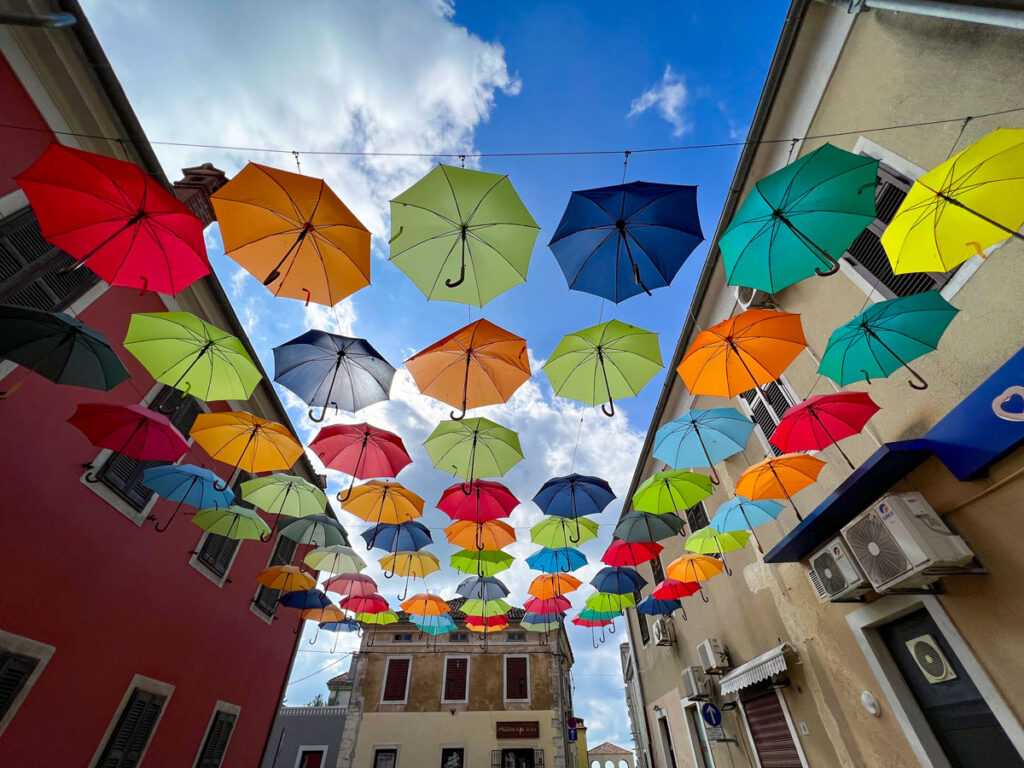
Best for: avoiding crowds, biking and swimming
One of the quieter towns along the coast, sleepy Novigrad runs at a slower pace than many of its neighbors. But for those looking to unwind and escape the hustle, Novigrad offers some lovely resort hotels along the glistening Adriatic. The old town includes medieval fortification walls along the seafront, a maritime museum and Roman relic museum, and local churches dating as far back as the 6th century.
The surrounding countryside, being flatter than other parts of Istria, has numerous bike trails for cycling enthusiasts. Wine lovers can even map out their own wine-tasting trail, hopscotching between local vineyards. The trails also have easy access to the sea, to cool off after you’ve worked up a sweat.
Piran
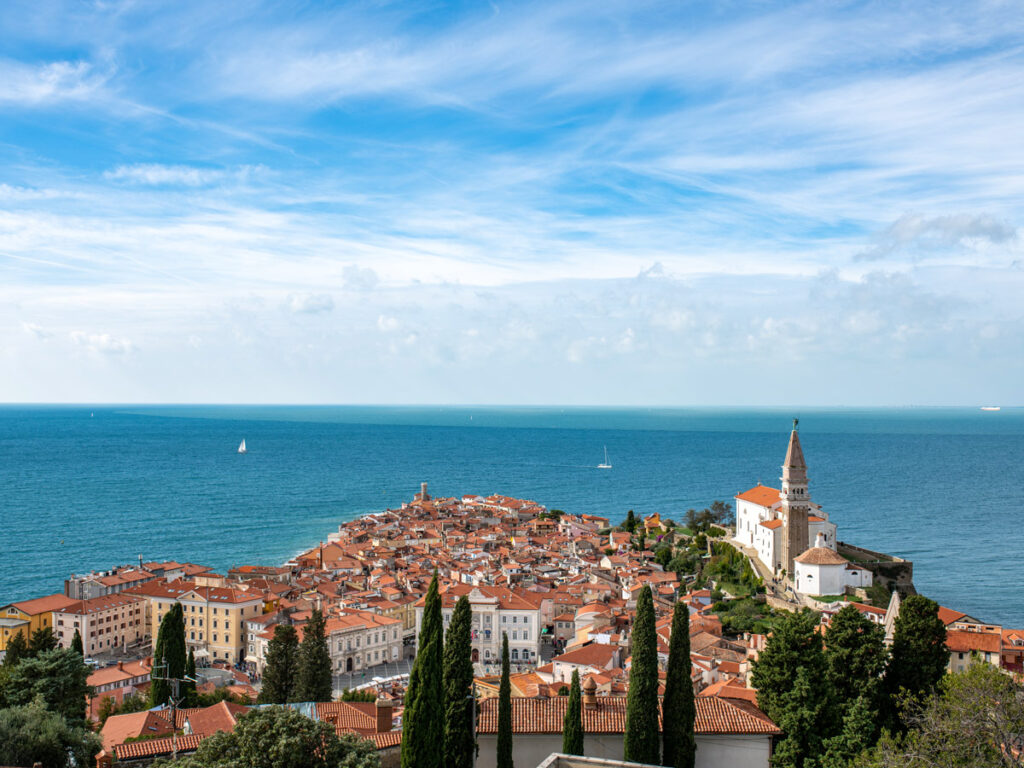
Best for: well-rounded day trip
If you’re village-hopping along the Istrian coast, be sure you don’t bypass Piran. One of Slovenia’s few seaside towns, it’s hard to believe this terracotta Mediterranean jewel is just a 90-minute drive from the country’s crisp Alpine lakes and mountains.
When you arrive, get your bearings in the main Tartini Square, where you’ll be greeted by colorful facades and outdoor cafes facing the town harbor.
Enjoy exploring the mazelike streets that lead vertically out of Tartini Square, before heading up to the medieval Walls of Piran above town. For a €3 fee, you can climb the 7th — 16th century ramparts that were built to keep out Turkish invaders. Nowadays, the walls provide some of the best views along the coast, stretching from Croatia in the south to Italy in the north.
Just down the hill from the Walls, your path will naturally take you to the Church of St. George, with its own freestanding bell tower. A 1608 replica of Venice’s San Marco Campanile, the tower is also available for climbing, if you’re looking for more exercise and more phenomenal views.
Once your exploring has you ready to rest your feet, head back down to the harbor for a seaside espresso or gelato. We like Caffe Neptun, with a coastal terrace so authentic, you might even get a little sea spray at high tide. Leisurely watching the afternoon pass by from your bistro chair is the perfect cap to a day in this delightful Slovenian jewel. You can read a more in-depth summary of Piran here.
Motovun
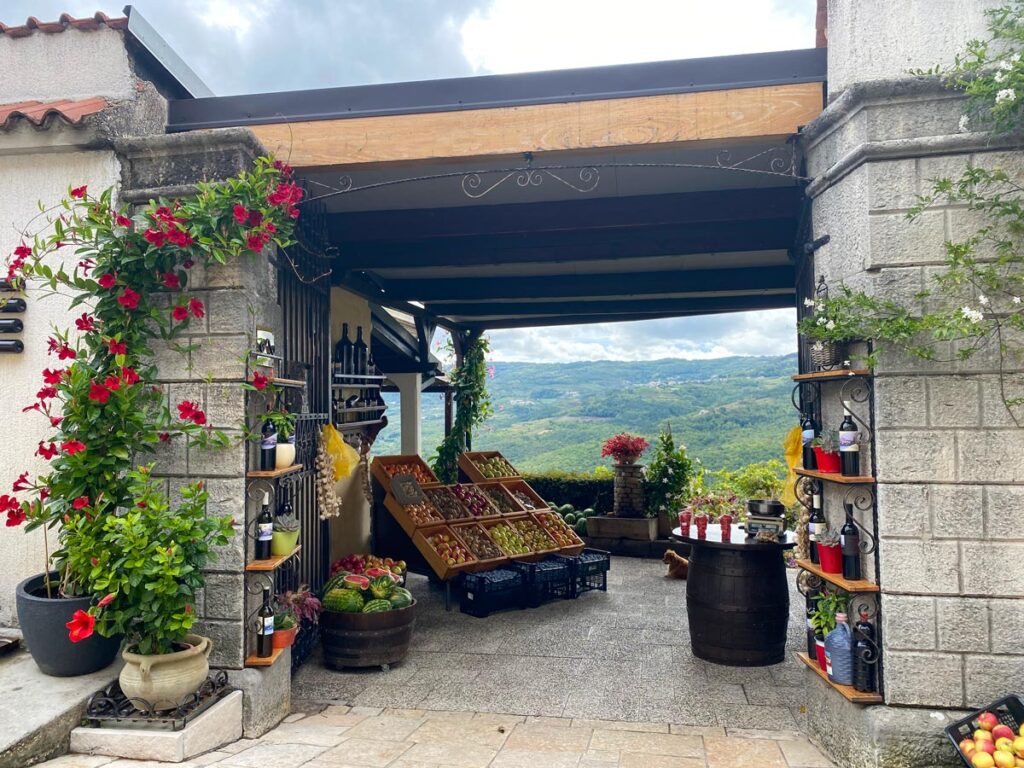
Best for: wineries, truffles
This medieval hilltop town, strongly reminiscent of those in Tuscany, is famous for its bountiful harvests. Local olive oils and wineries are plentiful, but what really puts Motovun on the map are its truffles. If Istria is the truffle capital of Croatia, then Motovun is the truffle capital of Istria. Here you’ll find truffle hunting tours, truffle shops, and truffles on every menu in town.
While there isn’t too much to see in Motovun, it makes for a delightful, epicurean day trip. You’ll leave satiated off hearty local pastas, good wines, and provincial charm.
The old town is entirely pedestrian, but you can park at one of three lots outside the medieval gates. From here, it’s a 5-minute walk up the hill to the heart of Motovun. Amble the quaint cobblestoned streets, where you can pop into local stores to pick up jars of regional olive oil and honey, and enjoy all things truffles. There are more truffle shops than you can count, with numerous truffle hunting tours that operate foraging trips into the surrounding hillsides.
Every restaurant in town features truffles on its menu, but we particularly liked Konoba Mondo. This cheerful, low-key spot serves up a truffle fettuccine that was quite possibly one of our best meals in Istria.
Those looking to sample the local wines won’t be disappointed either. Tomaz sits at the bottom of the hill, with the award-winning Benvenuti and Fakin just beyond. And if you’re willing to go further afield, most of Istria’s award-winning wineries are all within a 30 minute drive of Motovun. Coronica, Koslovic, Cossetto, and Kabola all provide a wonderful tasting experience — it’s recommended to make a reservation ahead of time.
Looking for more travel inspiration in Istria? Explore our guides to Rovinj and Piran.
